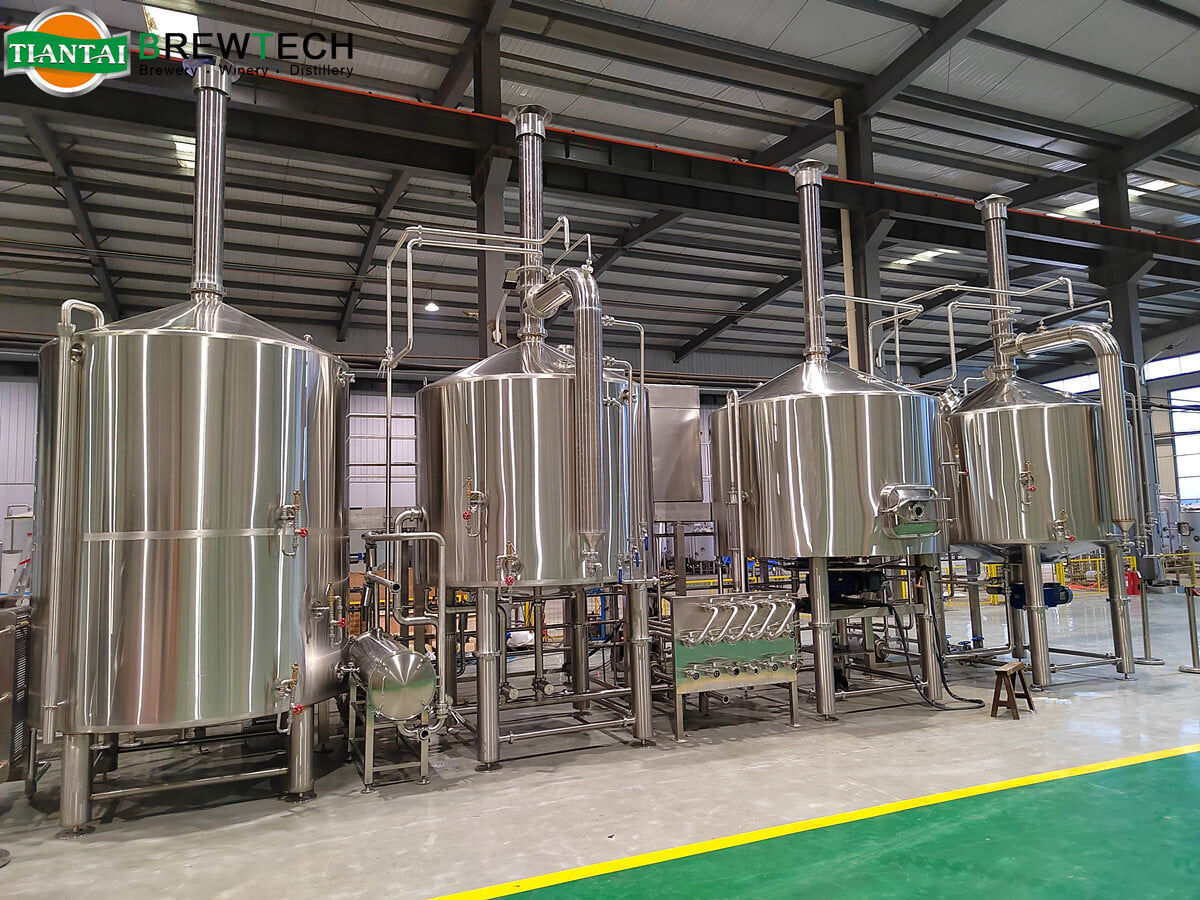
Many craft beer lovers, especially those who want to invest in opening a craft brewery, do not know which heating method is most suitable for their brewing system.
For craft breweries, there are three popular heating methods, namely electric heating, steam heating, and direct fire heating. The heating method will affect the brewing process, and of course, the design of brewhouse equipment will be different. Our brewing equipment is designed for various heating methods, and our suggestions for you will be based on your brewing needs and settings. Let's discuss which heating method is suitable for your brewery.
Electric Heating
Electric heating systems are a popular choice for 200L-1000L commercial brewing systems. Electric heating brewhouse equipment includes the heating tube in the kettle to ensure the highest heating efficiency. 100% of the heat generated by the electric heating will be transferred to the water or wort. This heating method is very common in homemade brewing systems and small commercial breweries, and the temperature can also be easily controlled. However, the heating speed of electric heating will be slower than that of steam heating and direct fire heating, which will prolong your brewing time. So for small brewing systems under 1000 liters, we recommend electric heating.
Advantages Of Electric Heating:
1. High-efficiency heating method for small brewery equipment, 100% of the heat generated is transferred to water or wort;
2. There is no need to worry about the appearance of carbon monoxide or open flames or explosive gases;
3. Cost-effectiveness is relatively high for 200L-1000L brewery equipment. If necessary, highly automated control can be carried out;
4. Excellent temperature control during the brewing process;
Disadvantages Of Electric Heating:
1. The cost of electric heating is usually higher than that of steam heating, but it is usually offset by higher heating efficiency;
2. The initial cost of equipment is usually higher than that of direct fire heating, but lower than that of steam heating;
3. In the craft brewery, there needs to be enough current for heating the kettle and other operations (varies according to the size of the brewing system);
4. The heating speed of electric heating is very slow, which will extend the brewing time;
5. After the brewing is completed, the electrical components need to be removed for cleaning, which is time-consuming and labor-intensive;
Direct Fire Heating
Direct fire heating is a popular choice for home brewers and small commercial breweries. Direct fire heating is to install a power gas burner outside the kettle, and the burner projects a forced-air flame onto the baffle or diffuser in the completely enclosed firebox below the kettle. This design significantly reduces the risk of scorching, while also providing good temperature control and a heating rate like steam heating.
Advantages Of Direct Fire Heating:
1. The craft brewery can be started at the lowest upfront cost;
2. Many brewers are accustomed to using gas kettles;
3. Some brewers prefer the caramelization that the gas system may bring;
Disadvantages Of Direct Fire Heating:
1. The heating efficiency of gas is usually only 25% to 50%, which may become the most costly heating method;
2. You may need to provide supplemental air and exhaust systems for direct combustion gas systems. It may need a professional mechanical engineer to provide planning and installation for your brewery;
3. Some craft breweries will need fire extinguishing systems;
4. In some states in the United States (such as California and Texas), the emission regulations and requirements of gas burners will cause a significant increase in costs and reduce the efficiency of opening a brewery;
Steam Heating System
The steam heating system is a popular choice for professional brewers and large commercial breweries. The brewhouse equipment usually welds the steam jacket to the inner shell. Because the steam jacket is in contact with the equipment, the steam can provide the fastest heating rate. As the fastest heating method, the steam jacket requires a lot of initial brewery construction costs to increase the special pressurized steam jacket, steam trap, and condensate return. Also, most local authorities must have expensive permits and inspections to operate steam generators/boilers, which may slow down your brewery’s startup time. You also need to hire a professional and expensive contractor to pass the inspection and safely connect the high-pressure steam optical fiber to your kettle. Finally, installing a steam system will greatly reduce the versatility and expansion potential of the brewhouse equipment, without having to pay for a larger brewing system.
Advantages Of Steam Heating:
1. Rapid heating method for large brewery construction;
2. When combined with a gas boiler, you can get good (but not the best) heating efficiency and lower energy costs;
3. It is easier to clean compared with electric heating;
Disadvantages Of Steam Heating:
1. Because of the need to build a boiler system and a steam system, it is the most costly heating method;
2. It is usually not very cost-effective to use in small-scale brewery equipment;
3. Local authorities in some countries/regions must inspect and operation of steam generators/boilers and must have high permits and inspection fees, which may slow down your brewery startup time.
The brewing system installed by each customer is unique. We believe that gas systems are most likely to be the best choice for home brewers and small business operations. For small commercial systems (2 to 10 barrels), electric heating is most likely to be the best, while steam heating is most likely to be the best choice for large systems. In general, Tiantai customizes and designs various sizes of brewery equipment with many heating methods according to the conditions and preferences of the brewer. Warmly welcome your inquiry.
Edited by Cassie
E-mail:[email protected]


.jpg)





Get A Quote